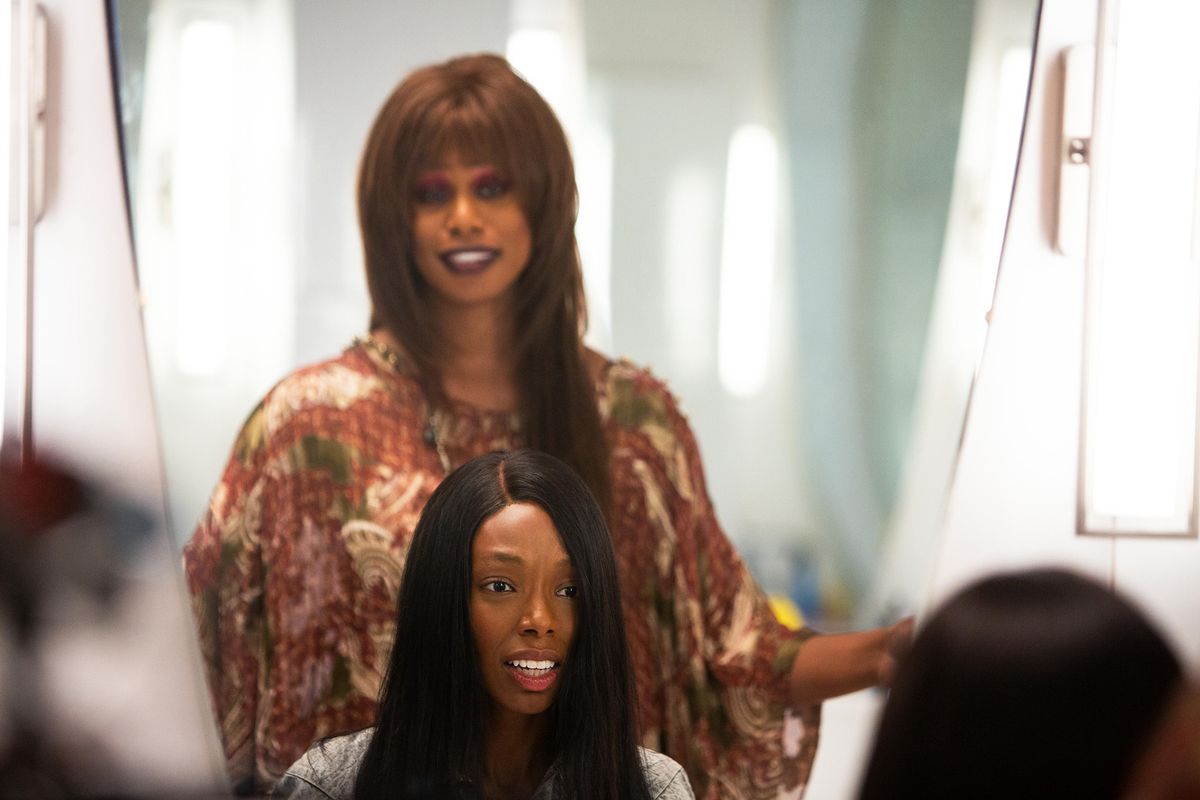Review: Horror comedy ‘Bad Hair’ adds layers to race-based workplace discrimination tale

Whip-smart cultural criticism delivered in an appealing package is what writer-director Justin Simien does best, as he demonstrated in his first feature film, “Dear White People,” and the spinoff Netflix series of the same name. His second feature, “Bad Hair,” is winking social commentary as high-concept horror comedy, holding both a mirror to society, and offering an escape valve. Genre films have always served an important function as a place to traffic in topics that would otherwise be taboo, and Simien uses the chance to take aim at the white European beauty standards that dominate Western ideology.
Simien sets his tale in the cutthroat world of TV production in Los Angeles in 1989, specifically at a Black-oriented music network called “Culture.” Newcomer Elle Lorraine makes her feature film debut as Anna Bludso, a lowly assistant, fearful for her job during a time of corporate upheaval, and willing to do anything.
The milieu of “Culture” is one of conscious 1980s hip-hop, featuring VJs like Brooke-Lynn (Lena Waithe) and Sista Soul (Yaani King Mondschein) who sport braids and natural hair and extol Afrocentric organic living. But when new management comes in, spearheaded by a floppy-haired ’80s monster Grant (James Van Der Beek) and “first Black supermodel” Zora (Vanessa Williams), they quickly pivot to new talent and a new image, embodied by mononymic pop/R&B diva Sandra (Kelly Rowland), who shakes her long, shaggy mane almost harder than she shakes her hips in her music videos.
Desperately hoping to move up the food chain at “Culture,” now called “Cult,” Anna, a classic shrinking violet with a short, natural ’fro, meets with Zora, equipped with stellar ideas and stats. But if she wants to succeed, Zora tells her, “my girls need to flow freely.” Anna leaves with a card for an exclusive salon, Virgie’s, where a mysterious stylist (Laverne Cox) offers the hottest new hair trend in town, a sew-in weave of long, glossy black hair. While she loves her new ’do, turning heads at the office, this scalp-searing mane is incredibly, violently and bloodthirstily high maintenance, seemingly with a mind all its own.
Simien sets his film 30 years ago, placing these race-based image-conscious pressures in a recognizable recent past. But the realities of the film are all too relevant, especially considering the current legal push to pass the CROWN Act in the United States. Standing for “Creating a Respectful and Open World for Natural Hair,” the CROWN Act is a law that “prohibits race-based hair discrimination,” and it’s only been passed in seven states so far.
While Anna’s story of workplace discrimination could be current, Simien also deftly connects this wild tale of a murderous hairpiece to the distant past. As her hair violently possesses her, drinking up fresh blood from unsuspecting victims to remain straight and silky, Anna turns to a book of slave lore, and a folktale about a “moss-haired girl,” who fashions tree moss into a wig, adding another layer of both fantasy and reality to the witchy fable. While “Bad Hair” is more humorously incisive than truly terrifying, Lorraine, in the leading role, sells it, while Simien creates space to discuss the ways in which women enforce unfair standards of beauty on each other in a white patriarchal society, using the horror genre as a blunt but effective tool to clear the path.